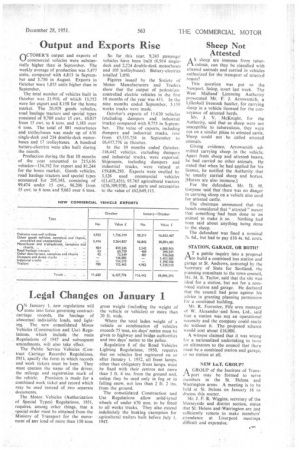Legal Changes on January 1
Page 31

If you've noticed an error in this article please click here to report it so we can fix it.
ON January 1, new regulations will come into force governing contractcarriage records, the haulage of abnormal indivisible loads, and lighting. The new consolidated Motor Vehicles (Construction and Use) Regulations, which include the main Regulations of 1947 and subsequent amendments, will also take effect.
The Public Service Vehicles (Contract Carriage Records) Regulations, 1951, specify the form in which records and work tickets must be kept. They must contain the name of the driver, the mileage and registration mark of the vehicle. Provision is made for a combined work ticket and record which may be used instead of two separate documents.
The Motor, Vehicles (Authorization of Special Types) Regulations, 1951, requires, among other things, that a special order must be obtained from the Ministry of Transport for the movement of any load of more than 150 tons gross weight (including the weight of the vehicle or vehicles) or more than 20 ft. wide.
Where the total laden weight of a vehicle or combination of vehicles exceeds 75 tons, six days' notice must be given to highway and bridge authorities and two days' notice to the police. •
Regulation 8 of the Road Vehicles Lighting Regulations, 1950, requires that on vehicles first registered on or after January 1, 1952, all front lamps, other than obligatory front lamps, must be fixed with their centres not more than 3 ft. 6 ins, from the ground and, unless they be used only in fog or in falling snow, not less than 2 ft. 2 ins. from the ground.
The consolidated Construction and Use Regulations allow solid-tyred wheels of under 670 mm. to be fitted to all works trucks. They also extend indefinitely the braking exemption for agricultural trailers built before July I, 1947.












































































